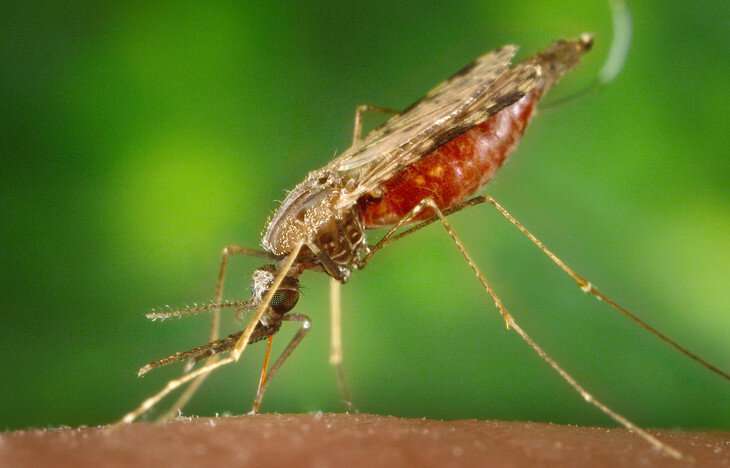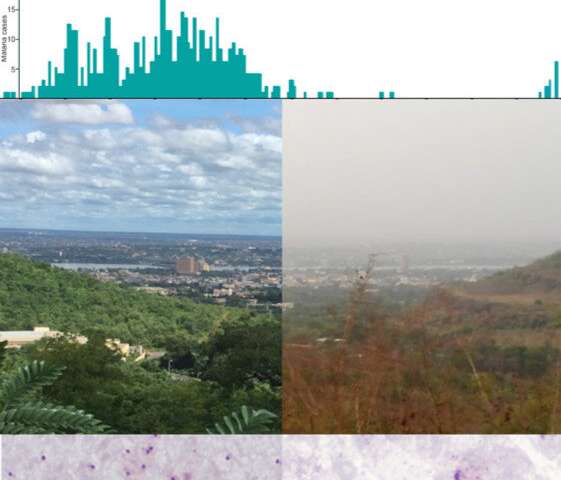
Malaria parasites survive the mosquito-free dry season by waiting silently in humans for the return of the rainy season that brings back with it mosquitoes. New research, by an international team including Penn State scientists, helps explain how the Plasmodium falciparum parasite survives the disruption to its lifecycle, which requires development within the mosquito host for transmission between people. A paper describing the research appears Oct. 26 in the journal Nature Medicine.
“One of the great mysteries in studying malaria,” said Manuel Llinás, professor of biochemistry and molecular biology and of chemistry at Penn State and an author of the paper, “is understanding how malaria parasites survive throughout the dry season which lacks mosquitoes for transmission between people.”
Malaria parasites, which affect hundreds of millions of people worldwide and kill nearly 300,000 children in Africa each year, spread among humans through the bites of infected mosquitoes. However, in many areas of the globe where malaria is endemic, an extreme dry season eliminates all of the mosquito breeding sites such that the mosquitoes disappear and malaria transmission is interrupted for several months every year. In these areas, asymptomatic people infected with the parasite can be found year-round, but symptomatic malaria cases rise sharply when mosquitoes are present before disappearing again during the dry season. Cases resume in the ensuing wet season when mosquitoes return and the cycle begins again.
The research team was led by Silvia Portugal at the Heidelberg University Hospital. Members of her lab visited Mali, working with Boubacar Traoré’s group at the University of Sciences, Techniques and Technologies of Bamako in Mali to follow almost 600 Malians ranging in age from three months to 45 years of age over several cycles of annual dry and wet seasons. By comparing blood samples from people carrying malaria parasites to non-infected people they determined that dry season parasites were not triggering host immunity.
According to the researchers, malaria parasites persist inside humans during the dry months at low levels that do not risk the host’s health, guaranteeing their survival until the next wet season when parasite transmission can resume. One hallmark characteristic of the malaria parasite is that it can seemingly disappear from blood circulation by adhering to the wall of the blood vessels as the parasite grows inside the red blood cell. This adhesion to the blood vessel helps the parasite avoid clearance when red blood cells are routinely passed through the spleen, which clears old, damaged, or infected red blood cells.
Although the malaria parasites continue to replicate inside of red blood cells year-round, during the dry season the infected cells are less adhesive and circulate longer throughout the body during the parasite’s replication cycle. The longer circulation time makes them more susceptible to removal by the human spleen keeping the parasite burden low in infected individuals.

Using parasites collected throughout the year, the researchers sought to answer several questions: Whether parasites persisting through the dry season were genetically different? How the parasite genome was transcribed? How fast and efficiently replication occurred in the human host? How circulating host metabolites were affected? How well the parasites escaped a spleen-like filter? And, what adhesive molecules could be promoting the differences?
“With the help of a vast team of experts in many of these areas,” said Portugal, “we could show that parasites collected during the dry season appear very different, but most of those differences were promoted by a less efficient adhesion of infected cells to the vasculature, leading to more developed parasites present in circulation during the dry season, and also to more efficient clearance of infected cells by the spleen.”
The Penn State team used mass spectrometry-based metabolomics to identify differences in human blood serum from infected people in both the dry and rainy season.
“Our team wanted to explore if there were any metabolic differences in individuals infected with the malaria parasite during different times of the year when mosquitoes are abundant or absent,” said Llinás. “What, if any, metabolic changes may impact the parasites in order for them to fly under the radar in the human host until the next rainy season when mosquitoes return and transmission resumes.”
Although the analysis clearly identified a separation between human metabolites collected in the dry season versus the rainy season, the sample size was too small to determine specific metabolites that may extend the circulation time necessary to keep the parasite burden low.
Source: Read Full Article